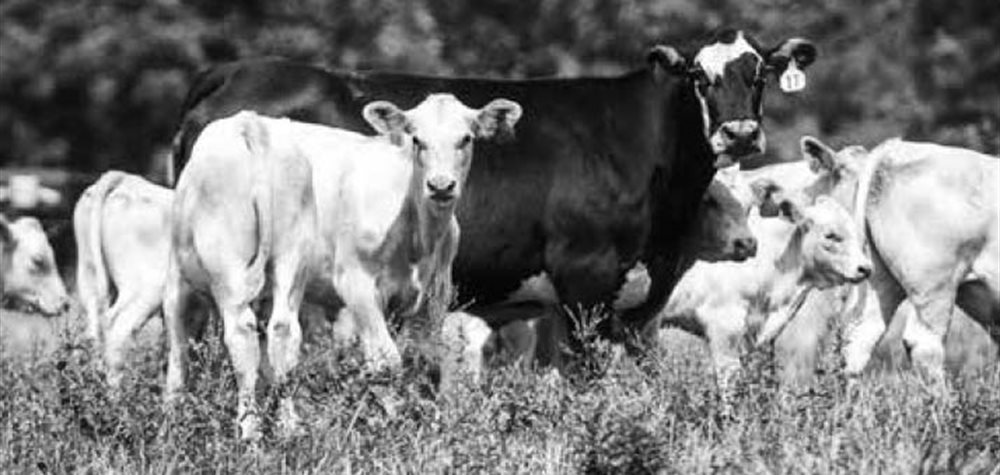
Charolais Edge | By Heather Smith Thomas | Spring 2017 Issue
There are a number of advantages when using Charolais bulls in commercial herds. Many ranchers utilize Charolais as a ter-minal cross to produce superior calves. Doug Rogers, Rogers Bar HR Charo-lais in Collins, Mississippi, has been in business since 1959 and sells about 250 Charolais bulls each year, almost all of them to commercial cattlemen.
“The reason commercial producers should use a Charolais bull is that they always get heavier wean-ing weights. Today, with lower prices per pound, you need more pounds to make the same amount of money,” he explains.
“With Charolais-cross calves, you get good weaning weights, good weight gain and good yearling weights. If the cow herd is some other breed, you get the hybrid vigor on top of that. Doc- umentation from studies at Colorado State University show at least 60 pounds more at weaning. This makes a lot of money for the producer and is one of the biggest values, in increased weaning weight,” says Rogers. “Another plus is performance in the feedlot. Average daily gain and feed con-version is also better. These cattle don’t have as much fat, so it takes less energy to put the weight on. The gain is in red meat instead of fat,” he says. Muscle and meat is what you want, not fat. Feed efficiency is worth a lot, espe-cially when faced with increased feed costs. “A feedlot owner is trying to tweak everything possible, in order to be more profitable. If he can buy less feed and get the same amount of weight, it’s a good deal for him.” This is one reason Charo-lais-cross calves are in high demand.
“Uniformity in the calves is another plus. Nowadays, just because a calf is black doesn’t mean it is Angus. Everything has gone black. There are black Sim-mental, black Gelbvieh, black anything. But there is true uniformity in the calves when you use a Charolais bull; you know it’s a Charolais-cross calf. They have a distinctive look, so you know what you are getting. When you buy a black calf, however, you don’t know what you are getting.” Black has covered up a lot of other genetics. “Another nice thing about Charolais in our part of the country is that they can handle the heat better. Today, for instance it’s 95 degrees with 95 percent humidity.
A Charolais-cross calf is very heat tolerant (unlike black cattle) and can handle the heat far better than anything else in the Southeast. The Charolais bull will still be out working in the hottest part of the day, breeding cows, while other bulls are lying around in the shade. The Charolais bulls cover more cows in our part of the coun-try,” says Rogers. Buddy Westphal, Valley View Charolais Ranch, near Polson, Montana, has been selling most of his 200 plus bulls per year to commercial breeders for the past 48 years and feels the biggest value in breed-ing commercial cows to Charolais bulls is heterosis. “We’ve known about heterosis for a long time, even before I was in college at Colorado State University when this was the big buzzword. At that, the focus on hy-brid vigor was for hogs; people discovered that crossbreeding hogs produced healthi-er, hardier animals with greater gainability.
READ FULL ARTICLE
Published on 2/16/2021 (4 years 295 days ago) Ranch News